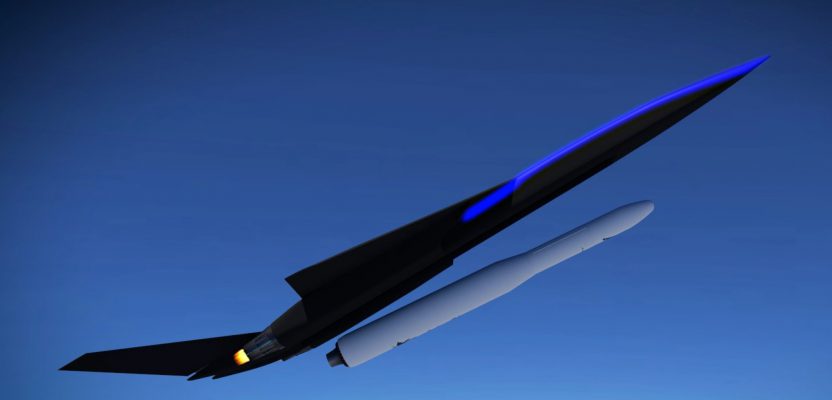Think of it as a revolution inside a revolution tucked inside yet another revolution.
Revolution #1: ground-based reusable rockets as exemplified by rocket billionaires Elon Musk’s SpaceX and Jeff Bezos’ Blue Origin. The reuse of launch vehicles is lowering barriers to space flight. Great stuff!
Revolution #2: air-launched rockets. A shining example is Paul Allen (Microsoft) with his Stratolaunch (which we discussed earlier this year in Big Bird, Black Ice. An update of the Stratolaunch effort follows at the end of this article). The idea behind air-launched rockets is simple. A great deal of the fuel expended in rocket launch is in the first several thousand feet. By strapping a rocket with satellite payload under an aircraft, flying to a high altitude, and then air-launching the rocket-satellite package into LEO, a substantial amount of fuel is saved. Another major benefit is that by taking an airport approach, satellite injections become faster, more routine, streamlined, and thus more economical.
Revolution #3: drone-launched rockets. Aevum Ravn, an Alabama-based aerospace company, plans to offer small-space payload launches as fast as every 180 minutes using an unmanned aircraft system called Ravn. Unlike existing launch vehicles, Aevum’s Ravn system is designed to operate like a commercial aircraft, reducing the turnaround time from landing to the next takeoff to anywhere between 30 and 80 minutes. Compare this to the few times a year that most space launches are confined to and you can see the positive impact that such a system would have on lowering barriers to Earth-orbit satellite launches.
The first stage of Ravn consists of a reusable, fully autonomous unmanned aircraft system designed for atmospheric flight. Unmanned platforms can be constructed at a lower cost than crewed aircraft, and the ground support team can be as small as six people. If the firm’s testing is successful, Aevum has three launches planned for the fourth quarter of 2019.
Drones and rockets: a winning combo that offers yet another way to lower the cost barriers to space flight.
Update on Stratolaunch: When the firm rolled out their huge craft, it noted that they were looking at Northup Grumman’s Pegasus rocket as its initial launch vehicle with others to follow. At the end of August the company announced its expanded family of launch vehicles. In addition to the Pegasus, they include:
- Medium Launch Vehicle (MLV): A new medium-class air-launch vehicle with 3,400 kg payload capacity
- Medium Launch Vehicle–Heavy: A three-core MLV variant for heavier payloads up to 6,000 kg.
- Space Plane: A fully reusable space plane. Initial designs optimized for cargo launch, with a follow-on version capable of transporting crew. Experts believe that this space place will be similar to Boeing’s X-37B.
Viva la (space) revolution!
 This article appeared in xyHt‘s e-newsletter, Pangaea. We email it twice a month, and it covers a variety of unusual geospatial topics in a conversational tone. You’re welcome to subscribe to the e-newsletter here. (You’ll also receive the once-monthly Field Notes newsletter with your subscription.)
This article appeared in xyHt‘s e-newsletter, Pangaea. We email it twice a month, and it covers a variety of unusual geospatial topics in a conversational tone. You’re welcome to subscribe to the e-newsletter here. (You’ll also receive the once-monthly Field Notes newsletter with your subscription.)

